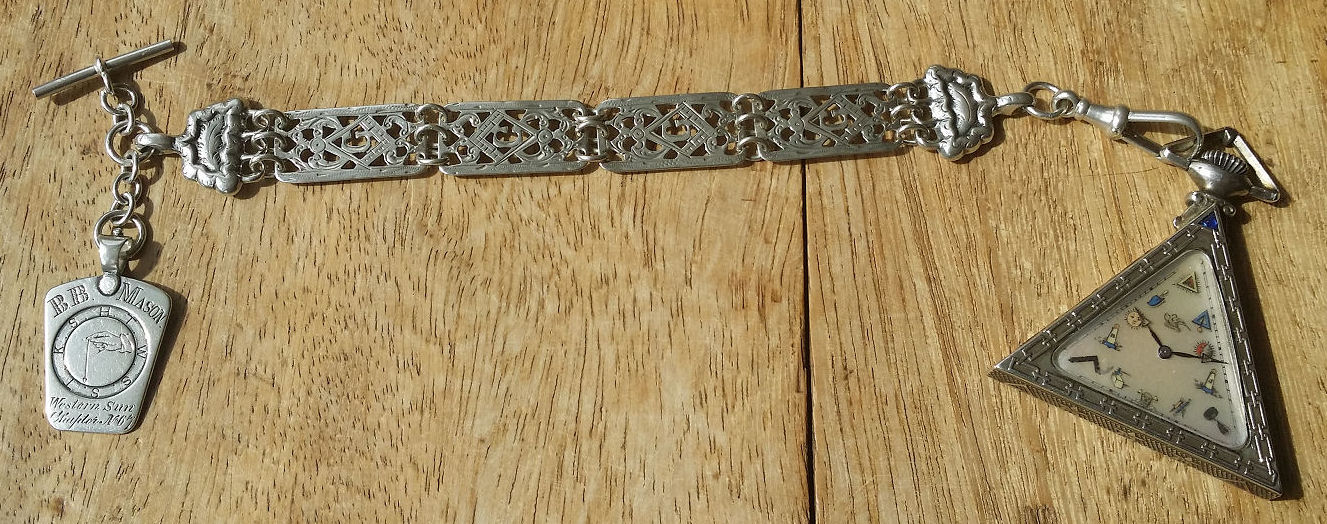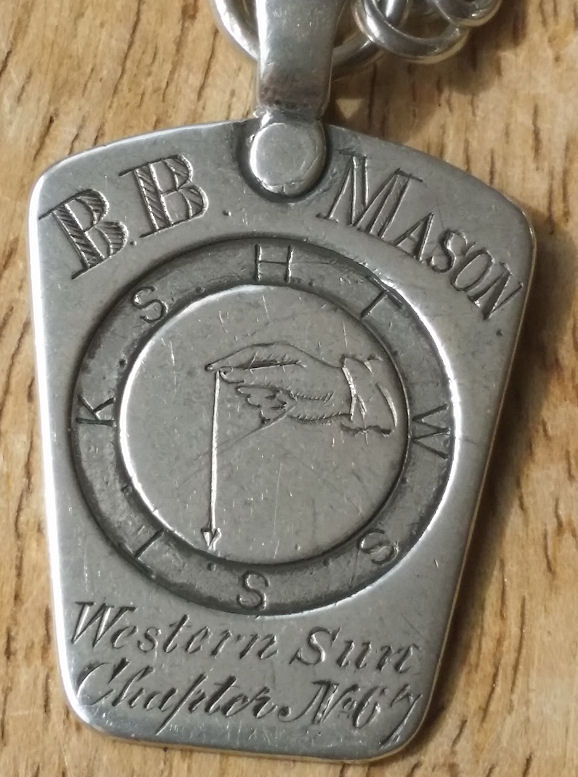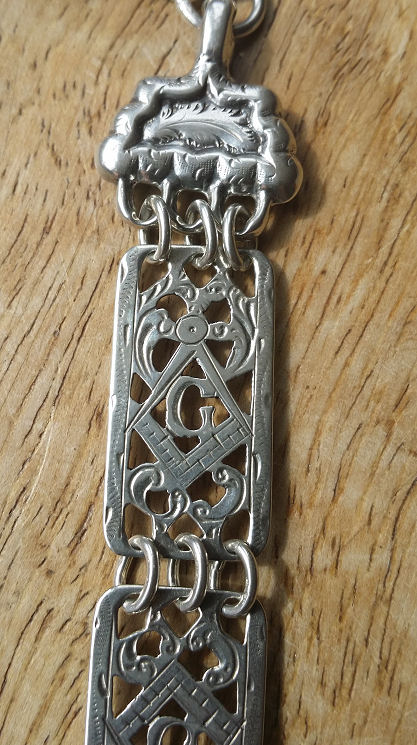Silver Keystone from
Western Sun Chapter No. 67
R.A.M. New York





The Mark
medal is a sacred token of the rites of friendship and brotherly love which are
a solemn obligation of the Mark Master degree. The Mark medal may be pledged for
a favor or act of friendship, but must be redeemed before it may be pledged
again. Unlike lodge jewels, which were symbols of office, Mark medals were
personal possessions retained by Masons, and [they] did not appear in American
Masonic usage until about 1795. The Mark medal was worn suspended from the neck
by a yellow ribbon, at one time the distinctive color of the Mark degree.
This piece came with a drop down ladder fob that looks similar to an officers
collar chain. The
medal was usually made of coin silver or silver plate, although rare examples of
gilt copper and even gold are known. On one side was engraved a personal
design, or 'mark,' that identified the owner. The reverse side usually bears the
owner's name, the name of his Mark lodge, and the date of his exaltation to the
degree."
The Keystone was placed in the center
of an arch which preserves the others in their places, and secures firmness and
stability to the arch. As it was formerly the custom of Operative Masons to
place a peculiar mark on each stone of a building to designate the workman by
whom it had been adjusted, so the Keystone was most-likely to receive
the most prominent mark, that of the Superintendent of the structure. Such is
related to have occurred to that Keystone which plats so important a part in the
legend of the Royal Arch Degree. The objection has sometimes been made, that
the arch was unknown in the time of Solomon. But this objection has been
completely laid to rest by the researches of antiquaries and travelers within a
few years past. Wilkinson discovered arches with regular keystones in the
doorways of the tombs of Thebes, the construction of which he traced to the year
1540 B.C., or 460 years before the building of the Temple of Solomon. And
Doctor Clard asserts that the Cyclopean gallery of Tiryns exhibits lancet-shaped
arches almost as old as the time of Abraham. In fact, in the Solomonic era, the
construction of the arch must have been known to the Dionysian Articifers, of
whom, it is a freely received theory, many were present at the building of the
Temple.
A special "Thank
You" to Wor. Bro. Paul McEvoy of
Goulburn Menturia Lodge 3478, England
which meets in Bolton in Lancashire UK
www.gmlodge3478.co.uk Wor. Bro. Paul also does a bit
of trading on eBay under the name paulmcevoy1
We Thank him for
sharing this beautiful Keystone from his private collection with our museum!

